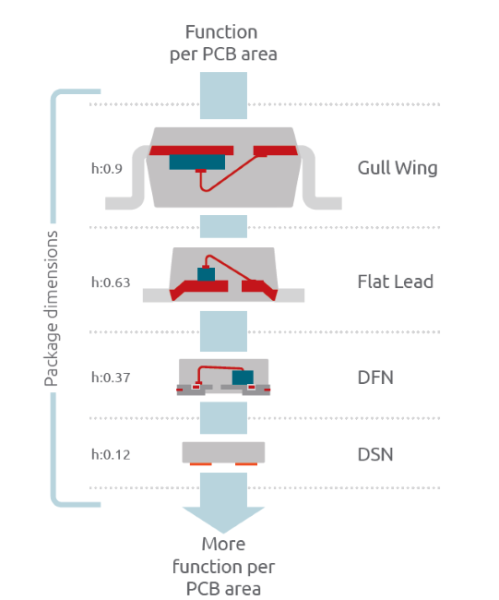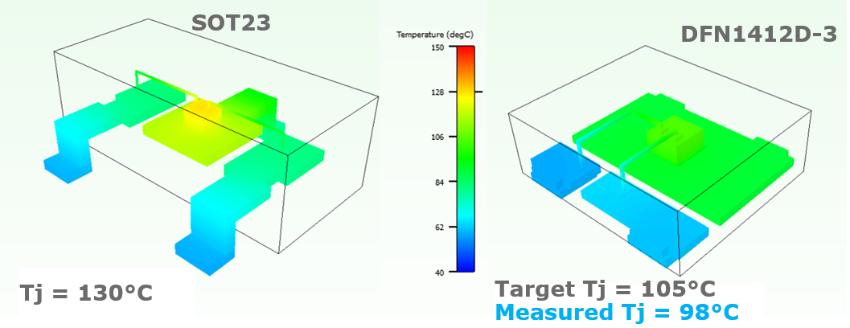Every system has its own unique challenges. But from automotive and industrial applications right through to the smallest wearables, managing thermal behavior has increasingly become a critical theme. As we integrate ever more functionality into smaller spaces, ensuring adequate thermal performance is key. One way to achieve that is with Nexperia’s DFN packaged portfolio.

Power and heat dissipation have always been an issue for designers. In the past it was relatively easy to solve. Simply connect a nice efficient heat sink to the chip or board. However, as we have continued to shrink electronic devices, made them operate at much higher-speeds and moved to high-density boards, semiconductor chip temperatures have been trending upward. A situation that can easily be made worse by the ambient temperature of the operating environment.
As I highlighted in the blog, “Easing the shift to leadless in automotive”, moving to small, discrete, flat, no-lead (DFN) options can free up significant board space. This allows designers to either reduce the overall footprint or increase functionality on the same board space while maintaining optical inspection (AOI) with side-wettable flanks. Importantly it also provides designers with a package that offers superior thermal performance in comparison to traditional package options.
Taking the heat out of designs
Comparing the same device in a SOT23 and DFN, we see the electrical parameters are nearly identical. Of course, the DFN package offers improvements in parasitic capacitance and inductance with the removal of the leads. On top of that the DFN package offers a significant improvement in thermal performance. This can be clearly shown in thermal simulations, such as the following example where a bias condition equivalent to 250 mW of internal dissipated power is applied to the discrete semiconductor device.
With the SOT23 package, the heat generated inside the silicon needs to dissipate through the leads to PCB. The PCB and to a very small degree the leads and body of the plastic package, radiate the heat to the surrounding environment. In this simulation, which is assumed to have an ambient temperature of 25 °C, the silicon in the SOT23 heats up to 130 °C.
In the DFN package however, the heat is dissipated from the silicon directly to the PCB through the integral metal heatsink. In our simulation the interior of the DFN1412D-3 package stays at 105 °C, a difference in silicon temperature of 25 °C. In fact, measured results showed the junction temperature to only be 98 °C. It is obvious that the thermal connection of the DFN package is significantly better compared to the SOT23.

Increasing reliability and extending lifetime
This difference in silicon temperature is significant. On one hand it allows us to drive higher power in such a package. However, and perhaps more importantly, the device runs cooler in normal operation modes. This helps extend the lifetime of a device and with that increases system reliability.